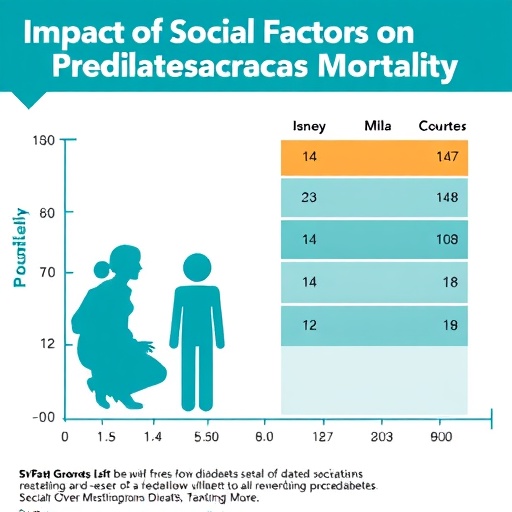In a remarkable breakthrough set to transform infectious disease forecasting, researchers from Johns Hopkins and Duke universities have developed an advanced AI-powered tool that significantly surpasses the accuracy of existing state-of-the-art disease spread models. This innovation, supported by prominent federal agencies, leverages the power of large language models (LLMs) to analyze and predict the dynamic trajectories of infectious diseases, including seasonal flu and COVID-19, with unprecedented precision.
Traditional epidemiological models have long relied on historical case data and relatively static parameters to forecast disease progression. However, these approaches have struggled to accommodate the complex and swiftly changing variables characteristic of real-world outbreaks. Lauren Gardner, a leading expert in infectious disease modeling at Johns Hopkins and the creator of the renowned COVID-19 dashboard utilized globally during the pandemic, emphasized the critical limitations of previous models. “COVID-19 elucidated the challenge of predicting disease spread due to the interplay of complex factors that were constantly changing,” she said. The models performed reasonably in stable conditions but faltered drastically amid evolving viral variants and shifting public health policies.
Published recently in Nature Computational Science, the newly introduced model—dubbed PandemicLLM—represents a paradigm shift from mere numerical prediction toward reasoning-based forecasting. Unlike conventional mathematical models, PandemicLLM integrates generative AI techniques akin to those powering ChatGPT, enabling the model to process diverse and temporally complex data streams, assimilate evolving infection patterns, and factor in multi-faceted external influences. This innovative approach allows it to anticipate outbreak dynamics and hospitalization trends one to three weeks ahead with high fidelity.
.adsslot_rliDaQ14RI{ width:728px !important; height:90px !important; }
@media (max-width:1199px) { .adsslot_rliDaQ14RI{ width:468px !important; height:60px !important; } }
@media (max-width:767px) { .adsslot_rliDaQ14RI{ width:320px !important; height:50px !important; } }
ADVERTISEMENT
One of the defining technical advances of PandemicLLM is its multi-modal data ingestion capacity. The model is designed to consume four major categories of real-time data: spatial demographic information at the state level encompassing healthcare infrastructure and political affiliations; robust epidemiological time series including case counts, hospitalization rates, and vaccination status; detailed public health policy indices quantifying stringency and specific interventions; and genomic surveillance data that tracks the emergence, characteristics, and prevalence of viral variants. This comprehensive data amalgamation offers the model a nuanced picture of both pathogen and population factors influencing the trajectory of disease spread.
Critically, PandemicLLM transcends the limitations of retrospective-only data analysis by incorporating dynamic, real-time information streams. Hao “Frank” Yang, an assistant professor at Johns Hopkins specializing in reliable AI systems, highlighted this distinction: “Traditionally we use the past to predict the future. But that doesn’t give the model sufficient information to understand and predict what’s happening. Instead, this framework uses new types of real-time information.” Through constant updating with fresh data inputs, the model can rapidly adjust predictions in response to shifting epidemiological landscapes, such as sudden surges in infections or the introduction of novel variants.
To validate the performance and robustness of PandemicLLM, the research team conducted extensive retrospective testing throughout the COVID-19 pandemic, analyzing 19 months of data across all U.S. states. These rigorous trials demonstrated that the model consistently outperformed all other comparable forecasting tools, including those endorsed by the Centers for Disease Control and Prevention’s CovidHub, especially during periods of volatile outbreak conditions when accurate predictions are most critical for public health response. The enhanced precision in anticipating hospitalization trends holds particular importance for healthcare system preparedness and resource allocation.
Another promising avenue of ongoing research involves expanding the model’s capabilities to simulate human behavioral decision-making during epidemics. By modeling how individuals perceive risks and respond to health policies, the researchers aim to create an even richer predictive tool that can assist public officials in designing more effective, targeted interventions. This dual computational approach, combining disease dynamics with social behavior modeling, could herald a new generation of precision public health analytics.
The implications of this work are profound. The COVID-19 pandemic exposed society’s insufficient tools for rapid, accurate prediction and real-time policy evaluation. PandemicLLM addresses these challenges head-on, providing a powerful resource that blends cutting-edge AI with epidemiological science. As Gardner aptly noted, “We know from COVID-19 that we need better tools so that we can inform more effective policies. There will be another pandemic, and these types of frameworks will be crucial for supporting public health response.”
This breakthrough is the product of a multidisciplinary team, including doctoral and graduate students from Johns Hopkins University, as well as collaborators from the University of Montreal, Harvard University, and Duke University. Their collective expertise in AI, systems engineering, public health, and genomic surveillance has been instrumental in achieving this advancement.
In addition to academic recognition, the research received financial backing from multiple reputable sources such as the U.S. National Science Foundation, Centers for Disease Control and Prevention, Center for Forecasting and Outbreak Analytics, Merck KGaA, and the U.S. Army Research Office. Such support underscores the vital importance and broad interest in revolutionizing infectious disease modeling as a cornerstone of global health security.
Looking forward, the team plans to refine PandemicLLM further and explore its integration into existing public health infrastructures. By embedding sophisticated AI-driven forecasting into everyday decision-making processes, officials will gain unprecedented foresight to contain outbreaks, allocate resources efficiently, and minimize societal disruptions caused by infectious diseases. Ultimately, this innovative tool embodies a critical step toward resilient, data-driven health systems capable of confronting the uncertainties of future pandemics head-on.
Subject of Research: Infectious disease forecasting using large language models and AI-driven epidemiological prediction.
Article Title: (Not explicitly provided)
News Publication Date: (Not explicitly provided)
Web References: http://dx.doi.org/10.1038/s43588-025-00798-6
References: Published research article in Nature Computational Science.
Image Credits: (Not explicitly provided)
Keywords: Diseases and disorders, Computer modeling
Tags: accuracy in disease spread predictionsadvanced AI tools for disease predictionAI in infectious disease forecastingchallenges in traditional disease modelsCOVID-19 forecasting innovationsdynamic modeling of infectious diseasesfederal support for health technology advancementsJohns Hopkins research on disease modelslarge language models in public healthPandemicLLM model for epidemic forecastingreal-time disease trajectory analysistransforming epidemiological forecasting with AI





